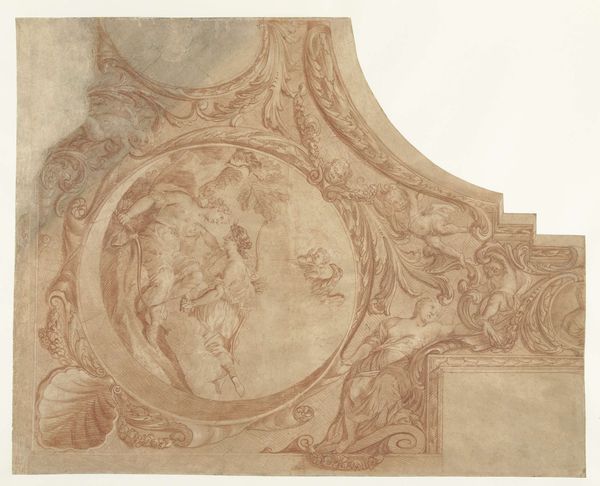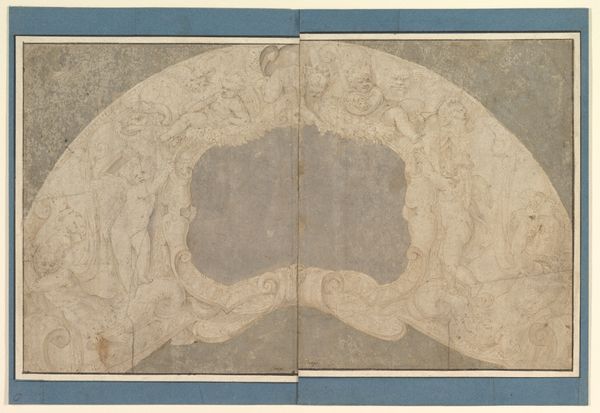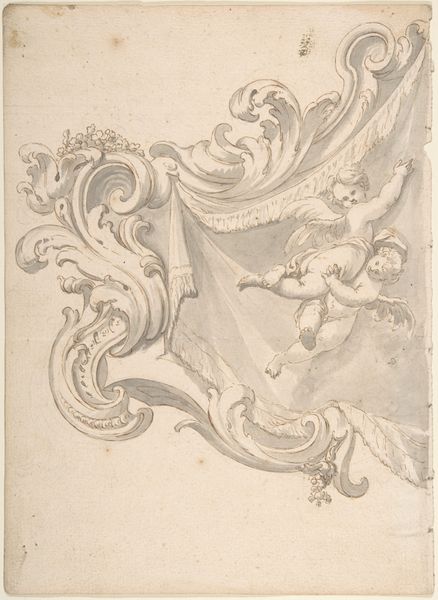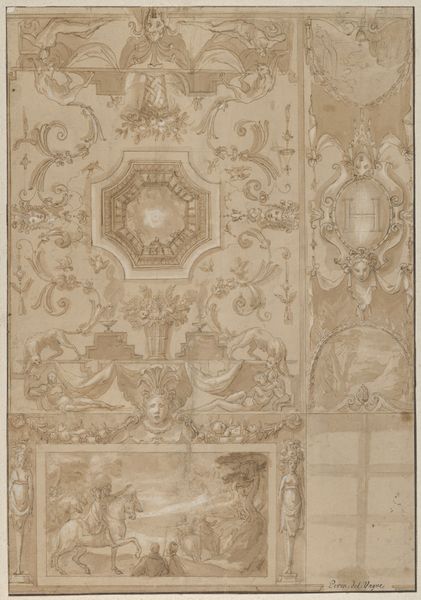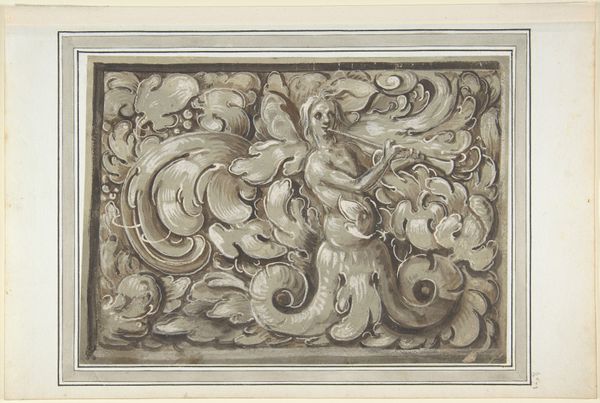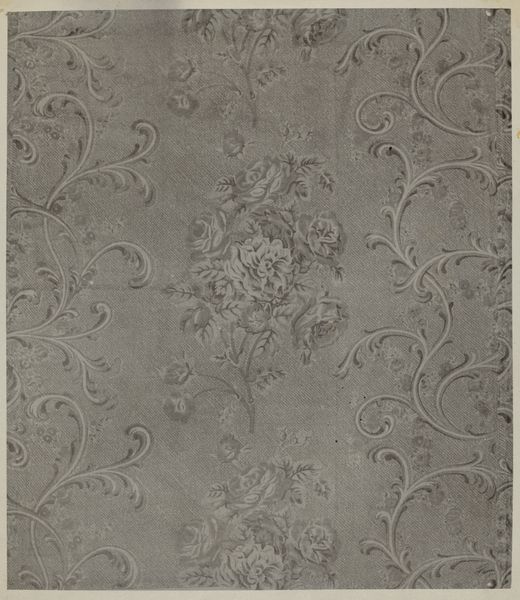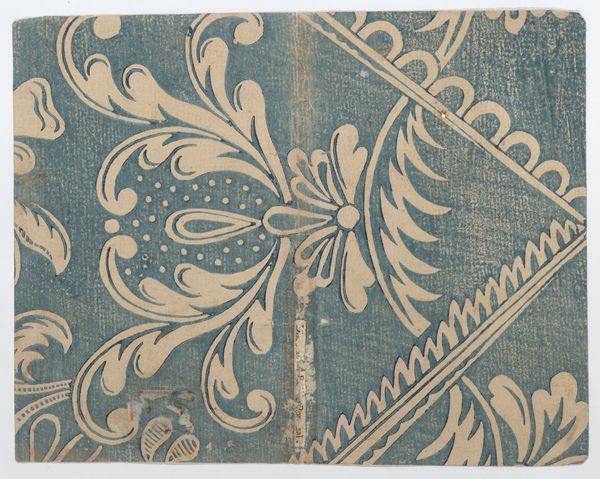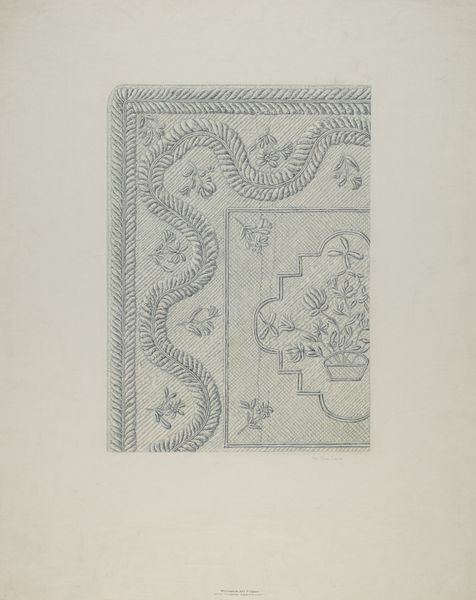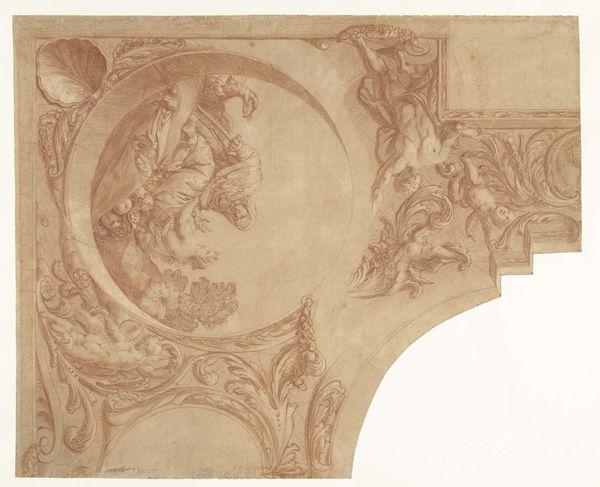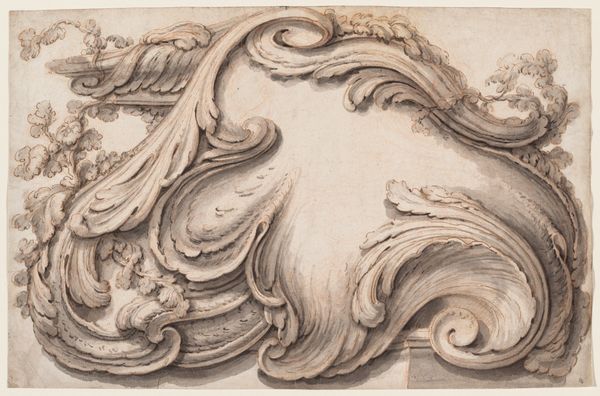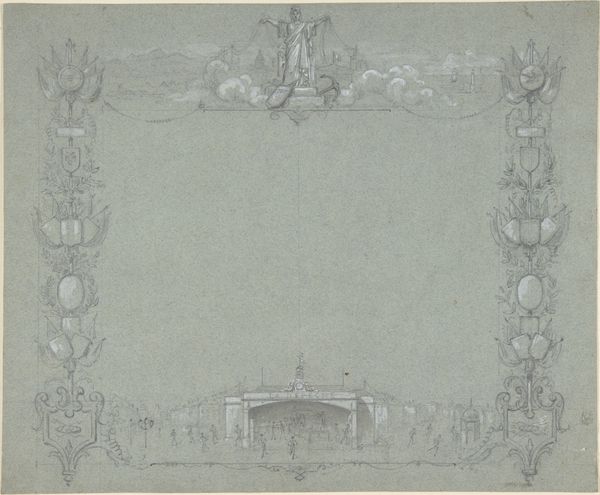
drawing, print, paper, pencil
#
drawing
#
baroque
# print
#
classical-realism
#
paper
#
form
#
pencil
#
line
#
history-painting
Dimensions: 10 3/8 x 12 3/4 in. (26.4 x 32.4 cm)
Copyright: Public Domain
Curator: Here we have an interesting drawing listed as "Design for a Fountain" dating roughly from 1700 to 1800. It's held here at the Met, rendered in pencil on paper, anonymous, leaving plenty to ponder, wouldn't you say? Editor: My first thought is extravagance. The blue paper lends this preliminary sketch an oddly finished feel, almost like a blueprint for lavish waste. All those curlicues! Curator: Waste, you say? To me, there's a sense of possibility. It hasn’t been built yet, but it *could* be… the line work is crisp. The hand seems quite skilled. Perhaps held back from truly going for broke in detail because, again, it's a plan! Editor: True. But who would *consume* such a thing? Who has the labor, and access to material for all that carved stone and pumped water to put in a garden? This fountain embodies an era defined by disparity, really showcasing social divides. Curator: Very good point! Its exuberant curves and the cherubic figure nestled among stylized waves harken back to Baroque exuberance tempered by the emerging clarity of classical ideals. Editor: And I see the work as speaking to shifts in the building trades and stone carving at the time. Designs such as these aren't only about aesthetics; they reflect material availability and expertise required, which dictates accessibility to commoners. Curator: A fascinating consideration, shifting focus to craft. What dreams, unrealized or fully brought to life, hid behind these curving lines and the cool detachment of blueprint precision? Is the artist someone envisioning material plenty or mocking impossible extravagance? Editor: It is that potentiality that keeps me curious! Who was paid to produce such fantasy? What were their working conditions and lives like? How does the act of drawing itself act as another labor to realize such ambitions, to give an unreal object value? Curator: Yes, and maybe even subvert expectations a bit as its purpose is being realized through line and the hand to produce a vision or product…it's the potential to see its actual reality. Editor: Absolutely! Designs as commodities reflecting their means, motives and the hidden social life behind them— fascinating. Curator: A material dream realized on paper, ready to potentially be scaled up! Thanks for sharing and chatting about this unique work with me!
Comments
No comments
Be the first to comment and join the conversation on the ultimate creative platform.
